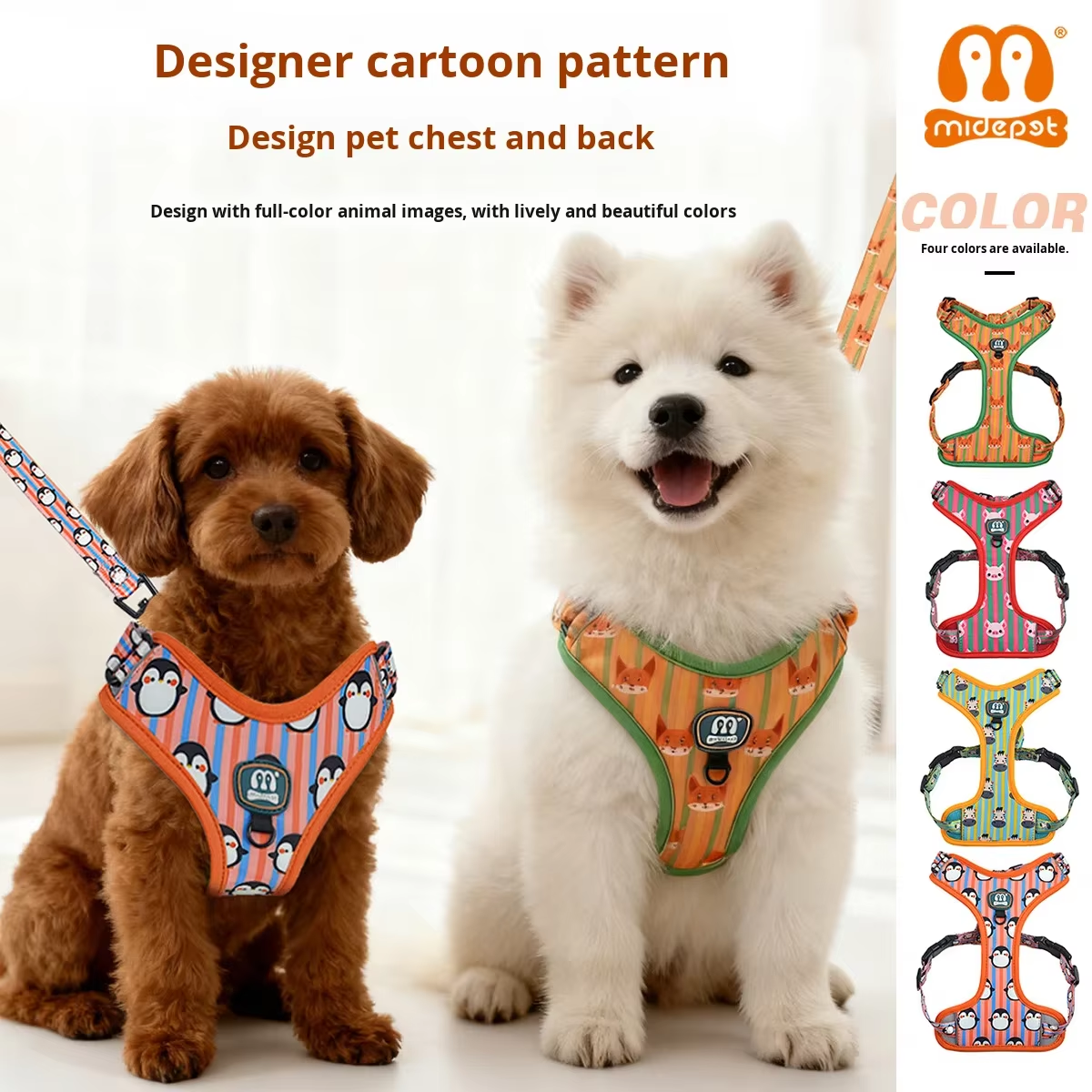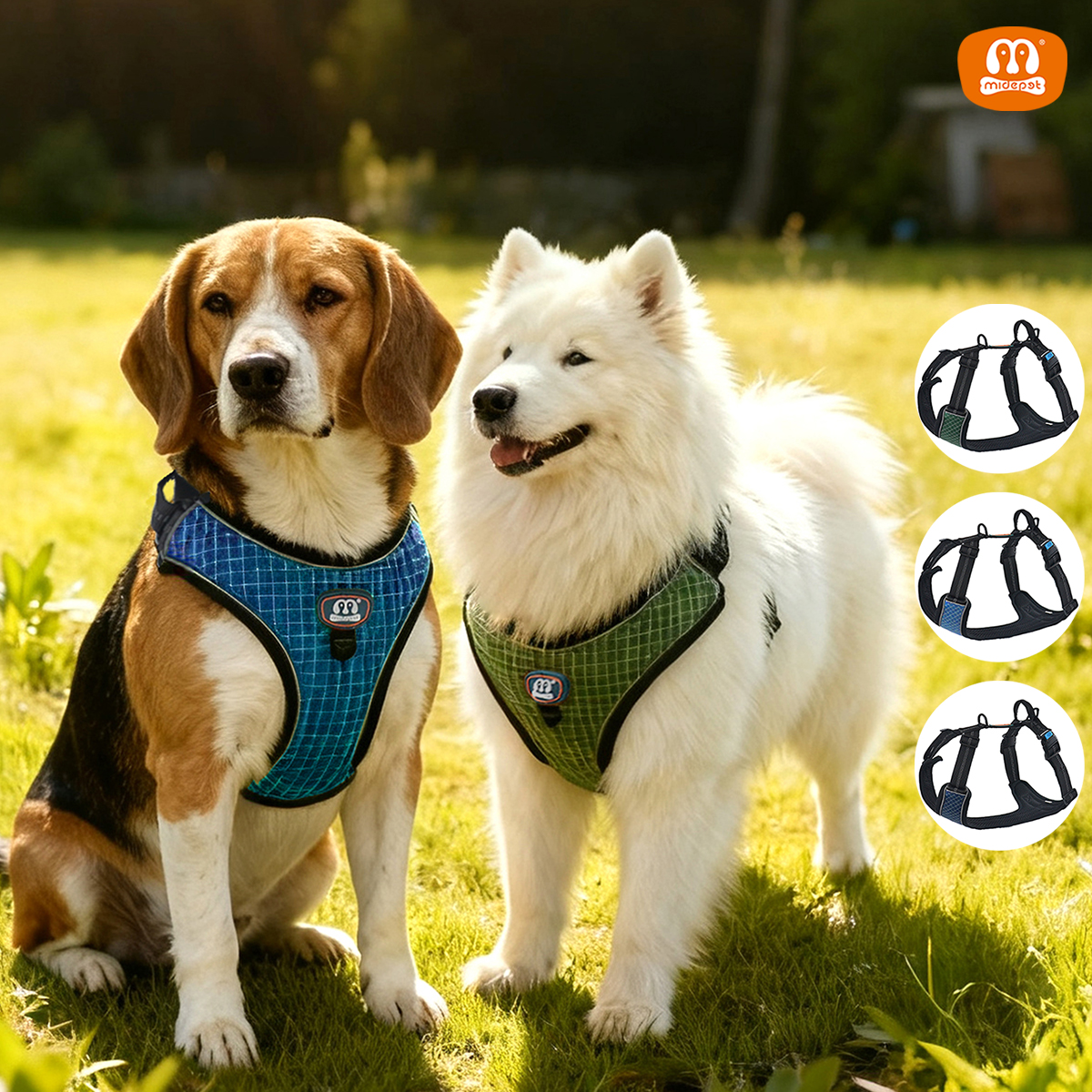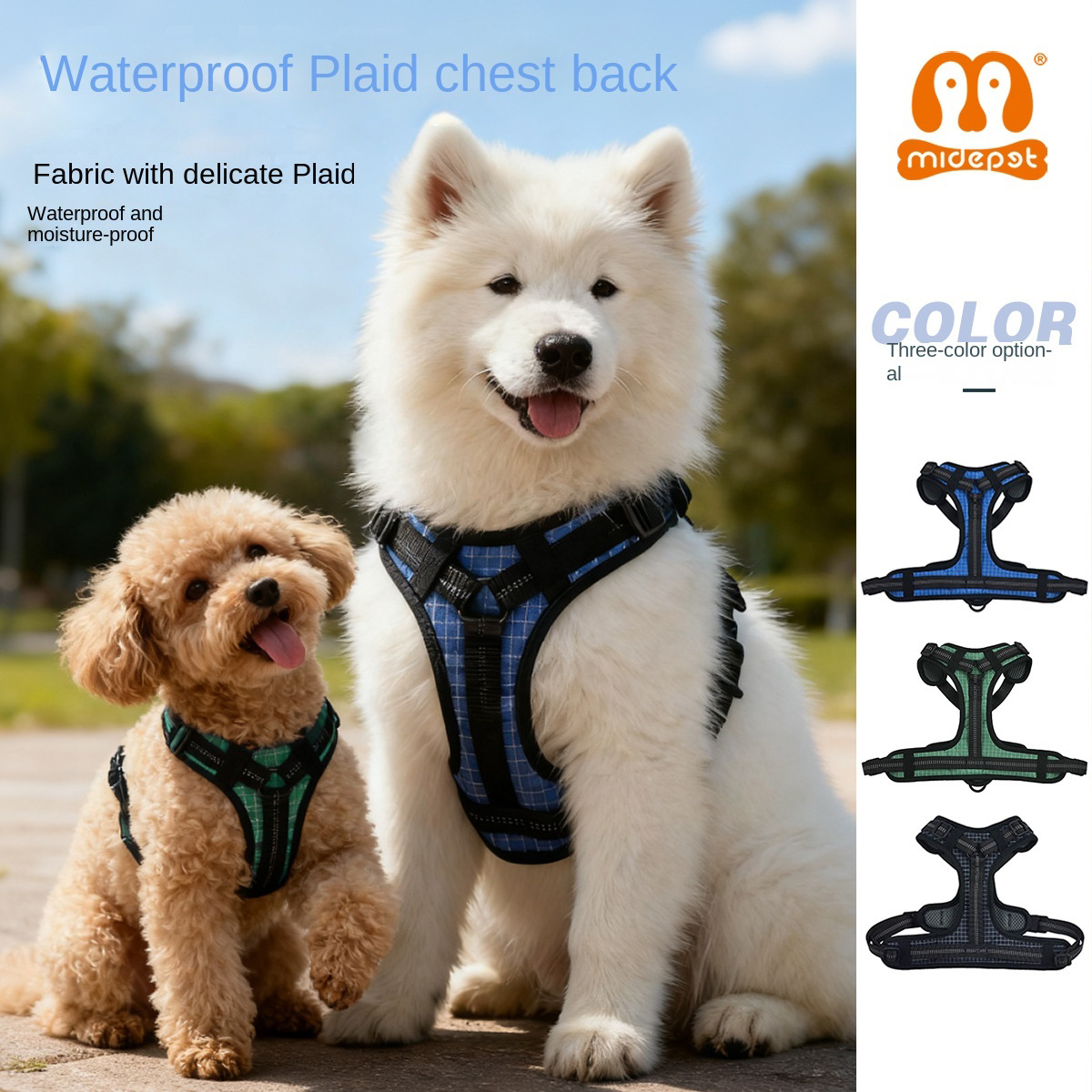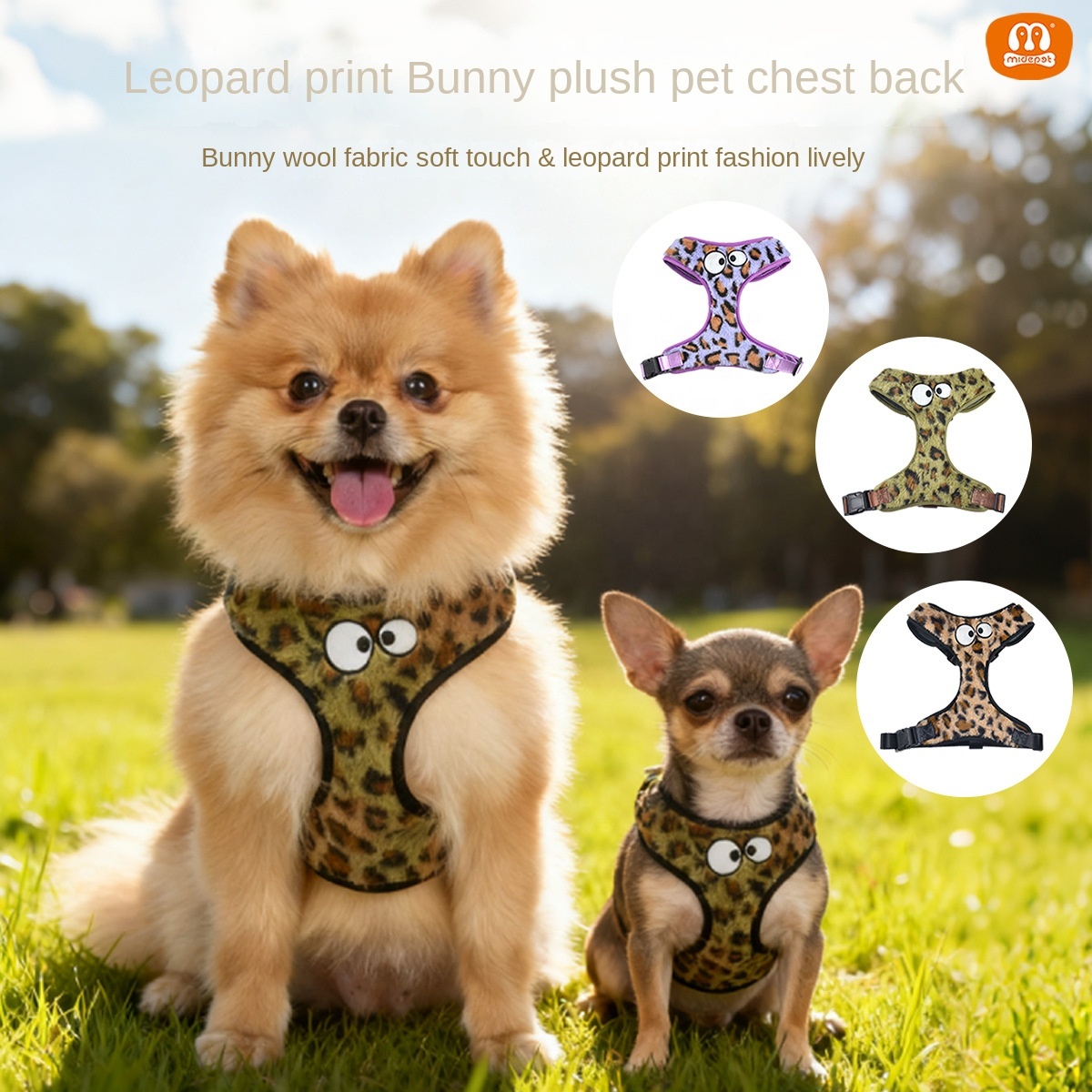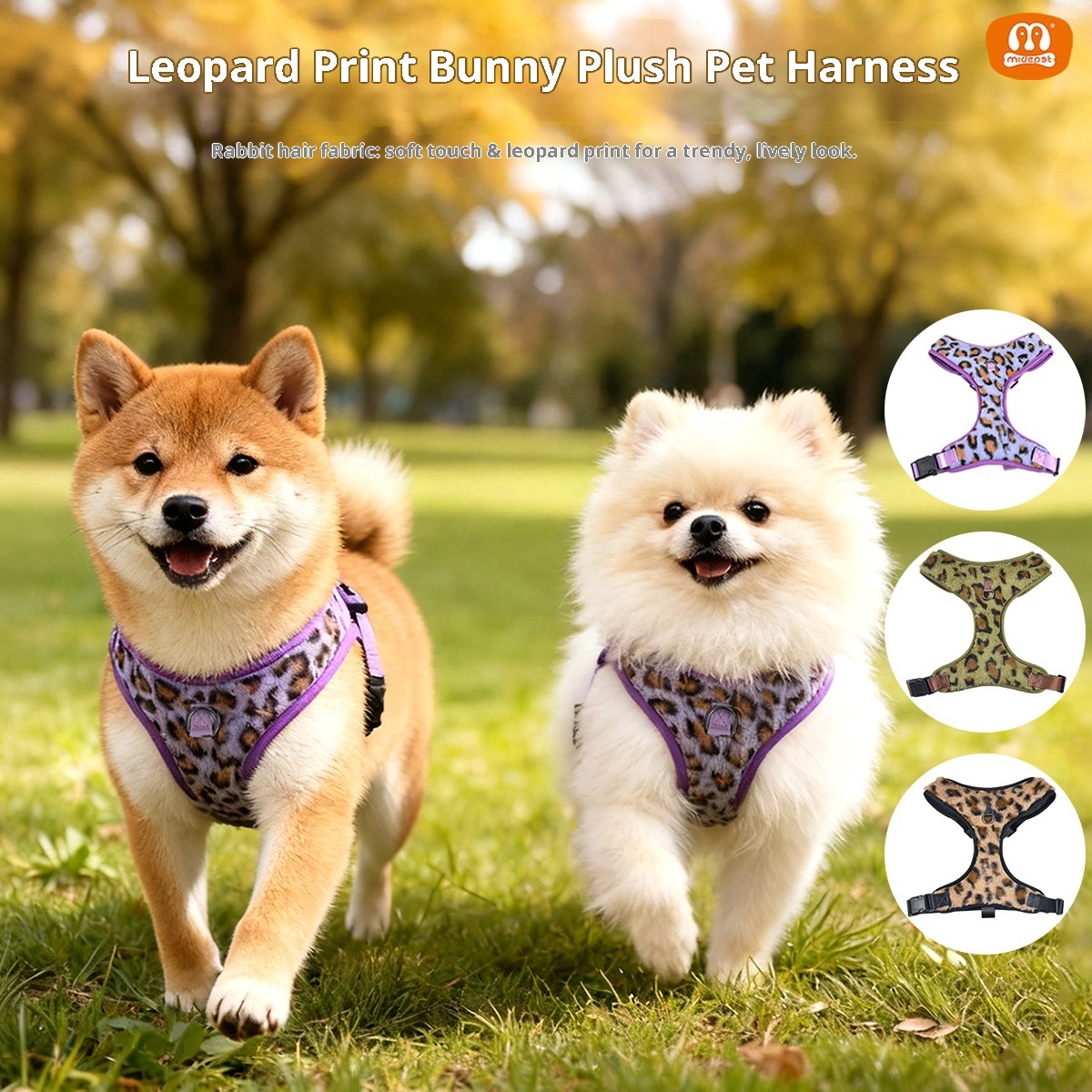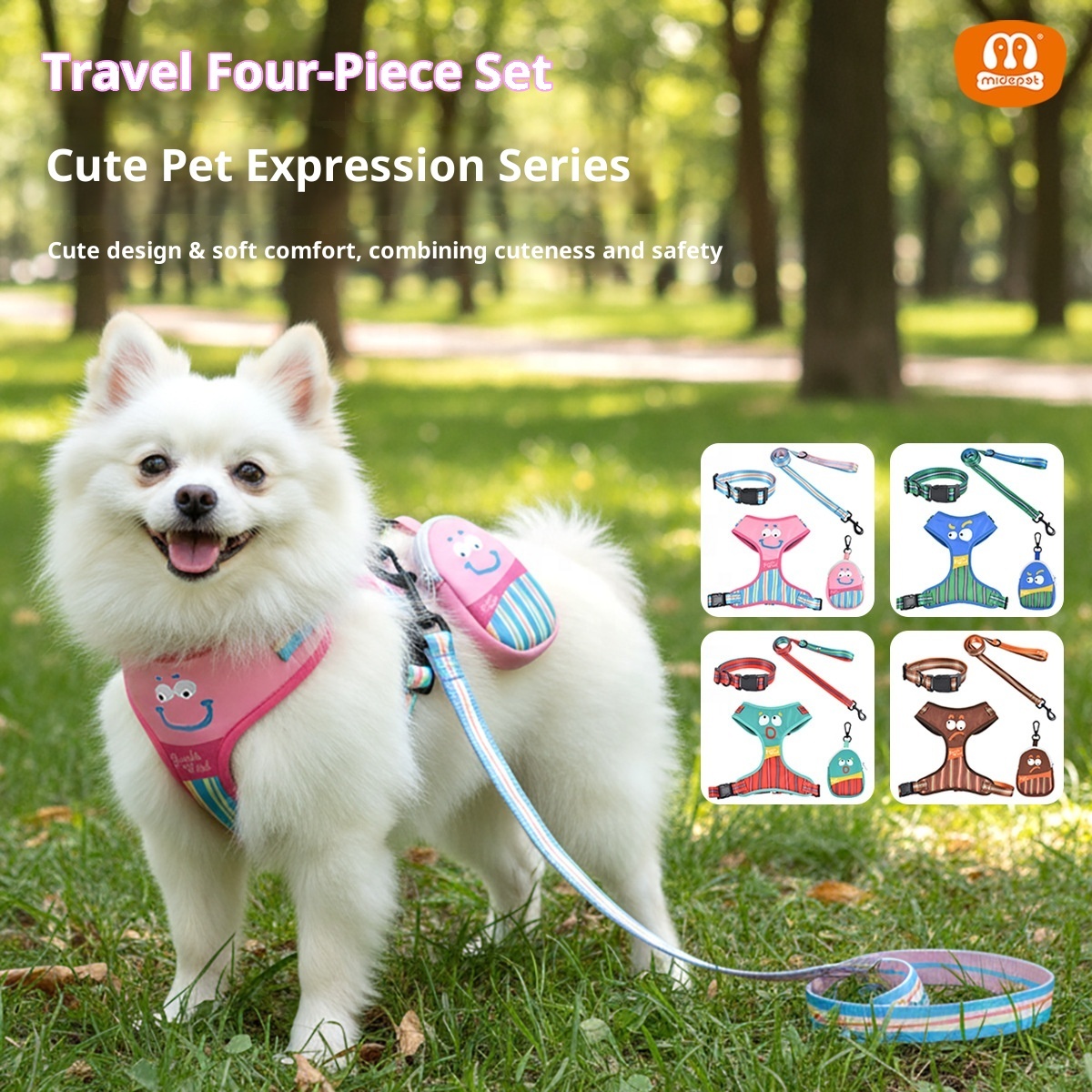Is a Collar or Harness Better for a Puppy
Is a Collar or Harness Better for a Puppy?
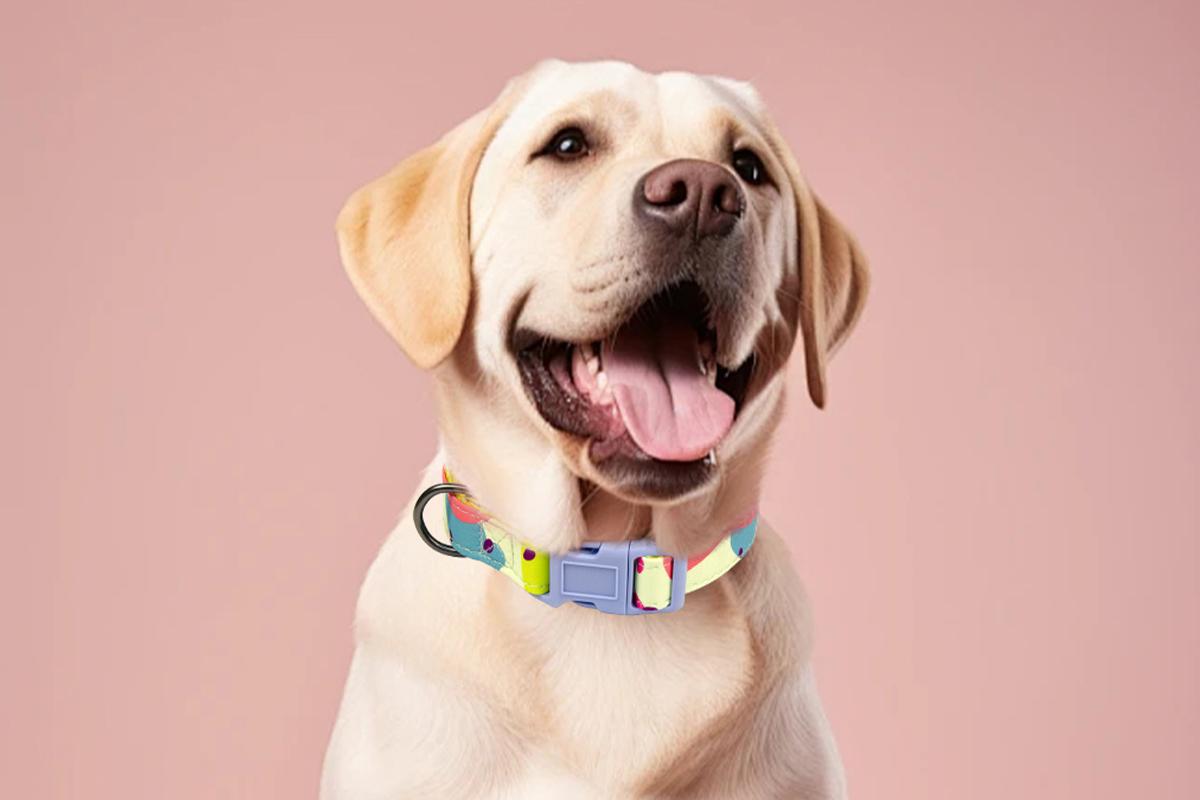
When welcoming a new puppy into your home, choosing the right walking gear is crucial. The two most common options are collars and harnesses. Both have their advantages, and the best choice depends on your puppy’s behavior and needs. In this article, we will provide an in-depth comparison between the two, and explore how they perform in everyday use. We'll also introduce the benefits of a no-pull dog harness, discuss the pros and cons of collars vs. harnesses, and cover special tools like the martingale harness and the best training collar for puppies. Our goal is to help you find the most suitable walking solution for your puppy.
Collars vs. Harnesses: The Basics
Collars have long been the traditional go-to for pet owners. They are ideal for attaching ID tags, vaccination records, and lightweight leashes. However, collars may not be the best option for all puppies, especially those that tend to pull on the leash or have delicate necks. Pulling on a collar can place unnecessary strain on a puppy's neck, potentially leading to injury over time, particularly for small breeds or young dogs still learning how to walk properly on a leash.
Harnesses, on the other hand, wrap around the puppy’s chest and shoulders, distributing pressure more evenly across the body. This reduces the risk of neck injuries and can be more comfortable for puppies, especially those that haven’t yet learned proper leash manners. Harnesses with a no-pull design are particularly effective at discouraging pulling behavior, making walks more enjoyable for both you and your dog.
Why Are Harnesses More Puppy-Friendly?
For most puppies who are still in the early stages of training, a harness offers a safer, more comfortable, and effective way to walk. Here are some reasons why harnesses are often the better choice:
1. Prevents Neck Injuries
Puppies have sensitive necks, especially small breeds or brachycephalic (short-nosed) breeds like Bulldogs or Pugs. Using a collar can increase pressure on their necks, potentially causing discomfort or even breathing difficulties. A harness helps evenly distribute pulling force across the chest and shoulders, protecting your puppy from injury and promoting healthier walking habits.
2. No-Pull Features
Most harnesses are designed with special no-pull features. For example, a no-pull dog harness often has a front-clip design that redirects the puppy’s forward movement when they pull, reducing the overall force on the leash and helping the owner maintain better control. This is particularly helpful for energetic puppies and can quickly teach them to walk without pulling.
3. Better Control
For lively or easily excited puppies, a harness offers better control over their movements during walks. With a front-clip or back-clip harness, you have more leverage to gently steer your puppy, making walks more manageable and training easier.
4. Ideal for Training
Many dog trainers recommend harnesses, particularly the martingale harness, for its gentle yet effective control. The martingale design slightly tightens when the puppy pulls but does not harm them, offering a secure and comfortable way to guide your puppy during walks and prevent them from slipping out.
When to Consider a Collar
While harnesses are often recommended for most puppies, there are still instances where a collar can be useful, especially for puppies that are already well-trained and used to walking calmly on a leash. Collars are a convenient option for short trips or for holding ID tags and are great for indoor wear.
If you choose to use a collar for your puppy, make sure to opt for the best training collar for puppies, one that focuses on comfort and safety. Soft, adjustable collars with a breakaway feature can provide a safe and controlled experience, especially for well-behaved puppies.
Martingale Harnesses and Puppy Training
The martingale harness is a hybrid between a traditional harness and collar. It provides slightly more control than a standard harness by tightening gently when your puppy pulls, without placing too much pressure on the neck. This design is ideal for dogs that tend to escape from regular harnesses or collars, providing both security and comfort. Martingale harnesses are an excellent tool for training, as they allow you to guide your puppy while teaching them to reduce pulling behavior.
Choosing the Right Gear for Your Puppy
When deciding between a collar and a harness, the key is to consider your puppy’s temperament and walking habits. If your puppy is active and tends to pull, a no-pull dog harness may be the most suitable option. It will give you more control and prevent your puppy from hurting itself. For puppies that have already been trained and walk well on a leash, a collar can work just fine, especially for short walks or daily wear.
In terms of training, using a reliable harness like the martingale harness can offer both comfort and control, helping your puppy gradually learn proper walking behavior without the risk of injury. If your puppy is comfortable with the harness, you can also integrate a training collar for different types of walks or activities, providing the flexibility to use the right tool for the right situation.
Conclusion: Choosing the Best Walking Solution for Your Puppy
Overall, both collars and harnesses have their strengths, and the right choice depends on your puppy’s habits, breed, and specific needs. For puppies that are still in the training phase, a no-pull dog harness or martingale harness is typically the best option, as it helps prevent pulling and avoids unnecessary strain. If your puppy is already well-trained, a collar can be a more convenient and lightweight solution for short walks or identification purposes.
Remember, no matter which tool you choose, your puppy’s safety and comfort should always be your top priority. You can also consider using both a collar and a harness depending on the situation—harnesses for walks and training, and collars for everyday use. With the right walking gear, your puppy’s development will be healthier, safer, and more enjoyable.


